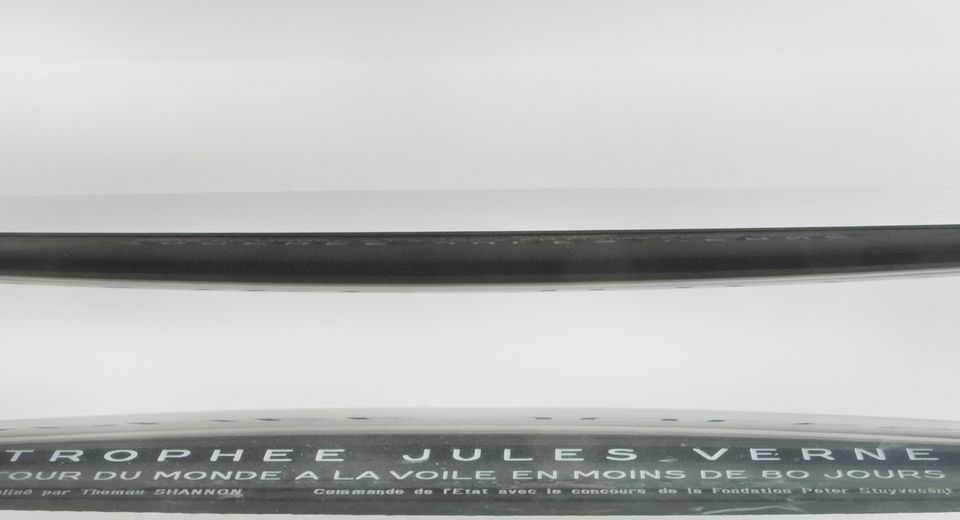Jules Verne trophy
Paris
Polished aluminium, glass
Levitating thanks to a magnetic field, the Jules Verne Trophy rewards crews who have achieved a round-the-world record in less than 80 days.
Contemporary art at the service of a legendary race
Less than 80 days non-stop and without assistance. This is the challenge set to the most daring skippers to become part of the round-the-world legend imagined by Jules Verne for his hero Phileas Fogg in 1872. Based on an initial idea by Yves Le Cornec, this competition was created at the instigation of Titouan Lamazou and Florence Arthaud following their respective victories in the Vendée Globe and the Route du Rhum in 1990. A set of rules was drawn up, opening up the challenge to all types of craft on an east-west course, with a start and finish line in the English Channel.
To symbolise the record to be set, the Ministry of Culture issued a call for tenders, which was won by Thomas Shannon. The artist proposed a sculpture in the shape of a hull, held in place by a magnetic system. A thin cable attached it to an engraved plate bearing the title and definition of the trophy, as well as the names of successive record holders. The first was achieved in 1993 by Bruno Peyron, who completed his circumnavigation in 79 days, 6 hours, 15 minutes and 56 seconds. Since then, skippers have continued to surpass this feat. The latest, by Francis Joyon on Idec-Sport in 2017, is 40 days, 23 hours, 30 minutes and 30 seconds.
« I wanted my work to incorporate the shapes, sizes and proportions of the main elements of the event: the boat, the human being, the sun, the moon and the earth. »
The winners
- 1993 - Record by Bruno Peyron in 79 days, 6 hours, 15 minutes and 56 seconds
- 1994 - Record by Peter Blake and Robin Knox in 74 days, 22 hours, 17 minutes and 22 seconds
- 1997 - Record by Olivier de Kersauson in 71 days, 14 hours, 22 minutes and 8 seconds
- 2002 - Record by Bruno Peyron in 64 days, 8 hours, 37 minutes and 24 seconds
- 2004 - Record set by Olivier de Kersauson in 63 days, 13 hours, 59 minutes and 46 seconds
- 2005 - Record by Bruno Peyron in 50 days, 16 hours, 20 minutes and 4 seconds
- 2010 - Record by Franck Cammas in 48 days, 7 hours, 44 minutes and 52 seconds
- 2012 - Record by Loïck Peyron in 45 days 13 hours, 42 minutes and 53 seconds
- 2017 - Francis Joyon's record of 40 days, 23 hours, 30 minutes and 30 seconds
Collection highlight
Discover the must-see works at the Musée national de la Marine.

